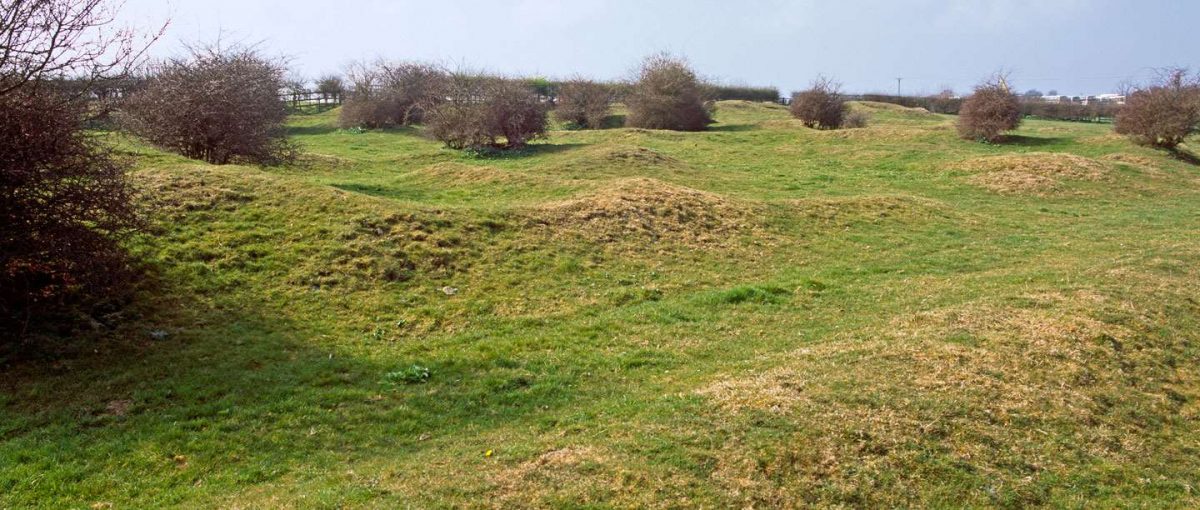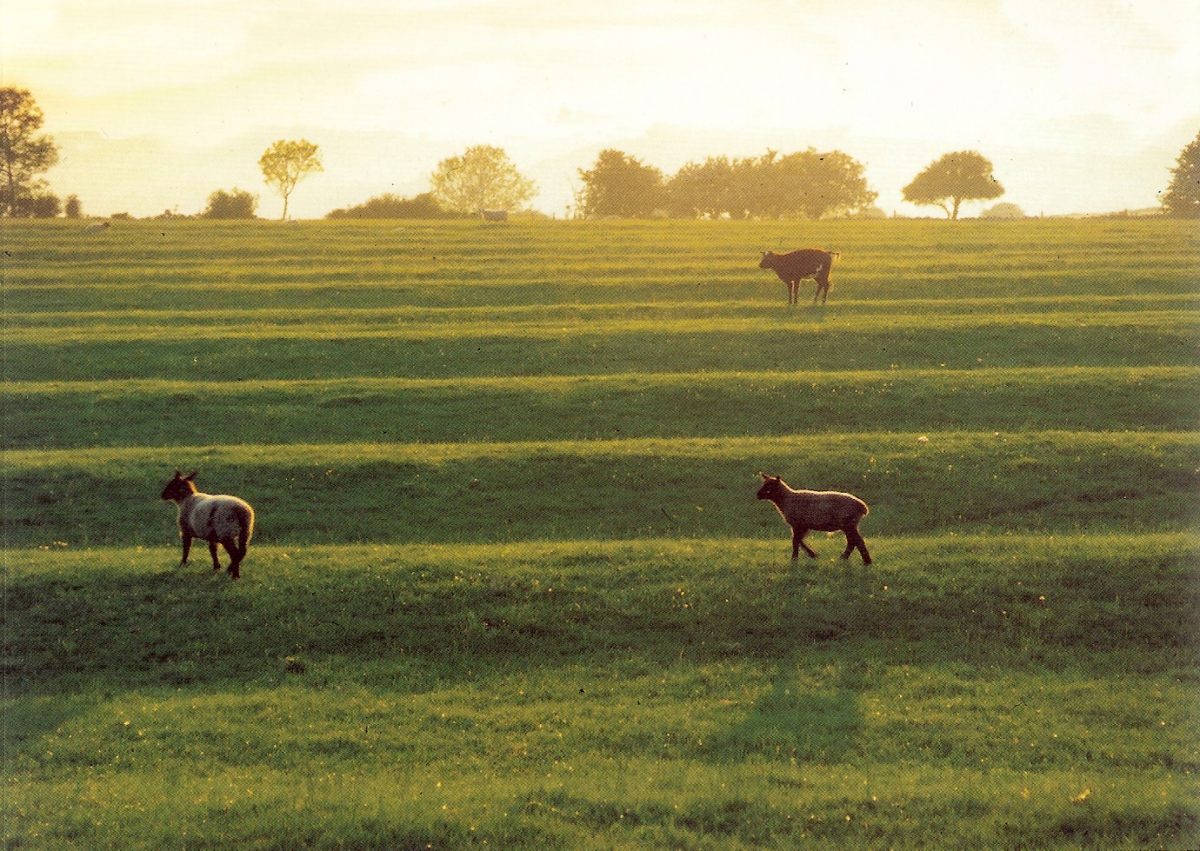Fields
What survives today
Topic 4: Fields
Looking at the fields within and around a settlement can also provide clues to its medieval past.
Humps and Bumps
A lot of these clues are in the form of ‘humps and bumps’ which may indicate the locations of former houses and gardens, or ‘ridge and furrow’ which is indicative of medieval agriculture.

Surviving ‘humps and bumps’ at Gainsthorpe deserted medieval village (Photo: English Heritage)
Ridge and Furrow
Ridge and furrow is usually a series of long parallel rises and hollows that extend across fields. These are a relic of the medieval ploughing process, where the heavy mouldboard plough would turn the earth over and on top of half of the previous turned over soil. This created the ridges that we can still see today.

An example of ridge and furrow under pasture in the Lincolnshire Wolds (Photo: Heritage Lincolnshire)
Houses and Gardens
In villages which have shrunk, or shifted location since the medieval period, it may be possible to locate the positions of former medieval houses (tofts) as rectangular raised areas, within a rectangular banked enclosure (croft) that delineates the garden or yardage associated with the house.
Roads
Sometimes the raised platforms and banks are not visible, but a long hollow may be present showing the location of the medieval road. These are often called hollow ways (or holloways) and can also survive as sunken lanes.
